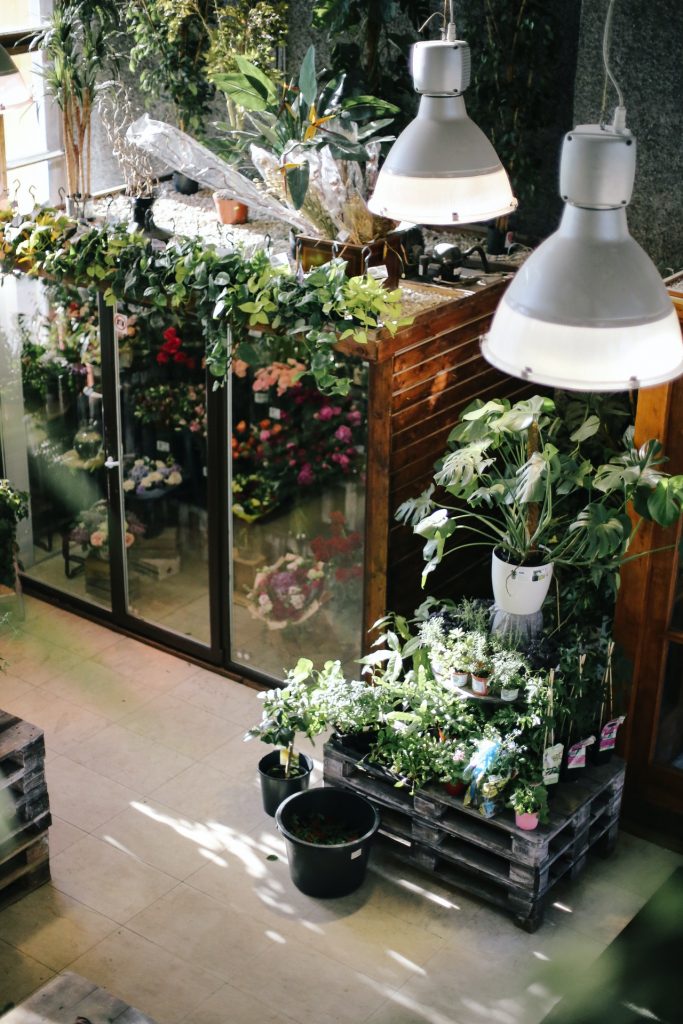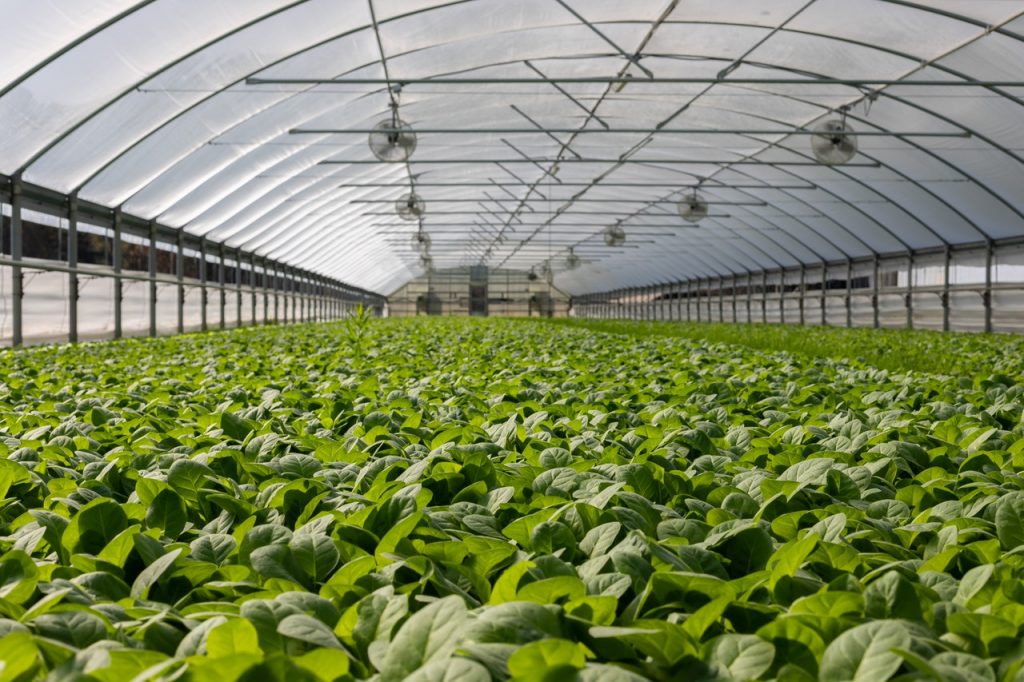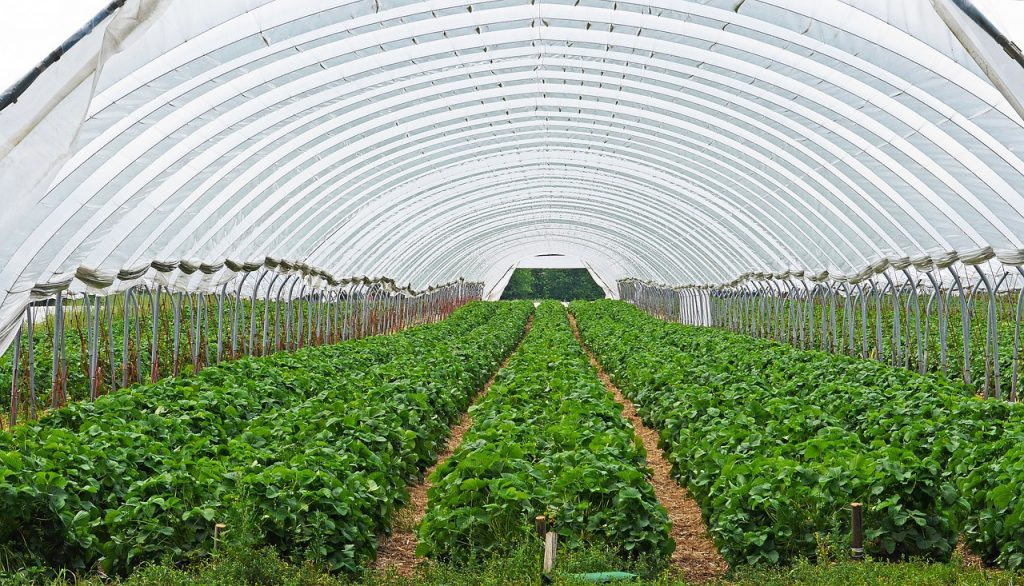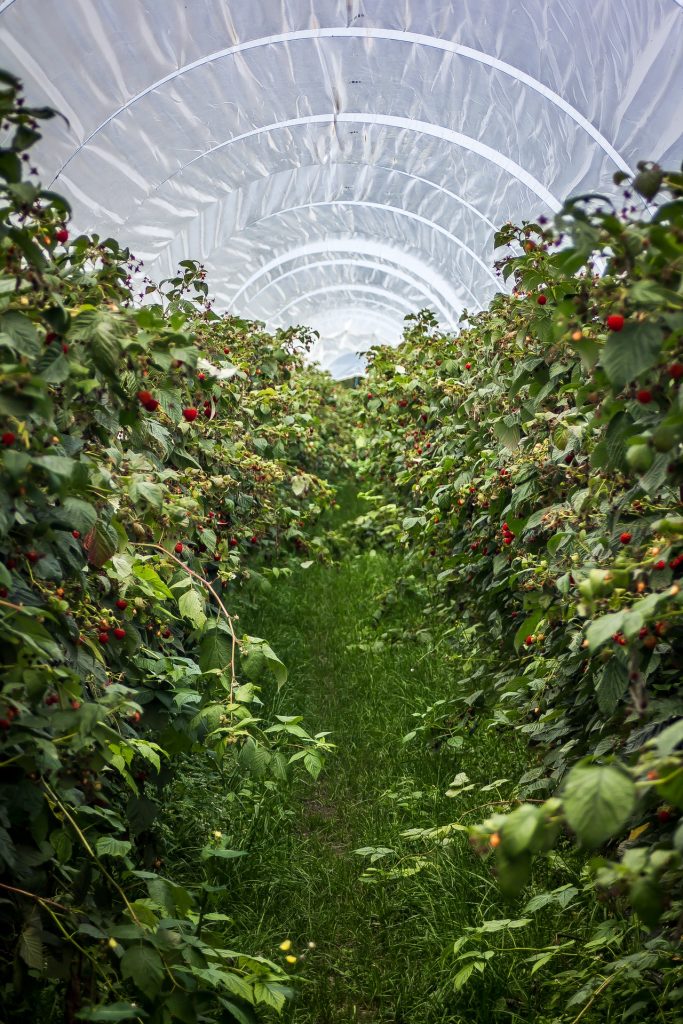
Greenhouses are becoming increasingly popular as gardening finds its way into the hearts of many different individuals. There’s something special about growing your own fruits, veggies, and favorite plants.
And, the gardening process, the continual learning, and improvement can become almost a healthy obsession.
If you’re one of those garden junkies, there are lots of ways you can ramp up your green thumb. One of these ways is building a greenhouse.
Greenhouses can be made in a variety of different materials and structures – and these material options are constantly expanding, along with the explosion of interest around gardening.
Typically, the most common materials to use for a greenhouse are:
- Glass
- Polyethylene plastic film
- Polyethylene panels
- Acrylic
- Fiberglass
- Vinyl
- Acrylic
 However, the question is, what would be the best material to use for your greenhouse?
However, the question is, what would be the best material to use for your greenhouse?
If you’ve already begun building your greenhouse (kudos!), and are trying to find the proper cover material for your roof, you’ve come to the right place.
In this article, we’ll outline the best greenhouse cover materials including greenhouse panels, to help you make an informed decision to finalize your greenhouse properly and beautifully.
Typical Greenhouse Cover Materials
 What type of greenhouse comes to mind when you hear the word? For most people, an image of a classic glass greenhouse is the first thing they think of. This is because glass is classy, sturdy and gets the job done perfectly.
What type of greenhouse comes to mind when you hear the word? For most people, an image of a classic glass greenhouse is the first thing they think of. This is because glass is classy, sturdy and gets the job done perfectly.
However, it can be expensive and difficult to install in some situations as well.
This is why we’ve covered every type of material that can work as a greenhouse cover, so you can decide which material fits you and your specific needs best.
Polycarbonate Greenhouse Panels or Rolls
Polycarbonate is lightweight, yet strong, making it a great greenhouse cover choice.
Greenhouse panels or panels made for outdoor weather typically have UV treatments to prevent any deterioration or yellowing from continual sunlight.
These covers are guaranteed for about 10 years, which is a decent amount of time for a roof.
They come in different types of thicknesses, from 0.79 mm to 12.7 mm.
Depending on the type of polycarbonate greenhouse panel you choose, you’re looking at paying for panels from $4.71 per foot to $117 for a 4×8 panel.
However steep this may seems, the cost of creating a cover with polycarbonate panels for a small greenhouse is a lot more economical than other choices on this list.
The average cost is anywhere between $204-$255 for 6mm wall panels or $468-$555 for 16mm for triple wall panels.
Besides glass, this is one of the most popular options due to its effectiveness, light-weight body, and budget-friendly cost.
Glass: The Traditional Greenhouse Cover

As mentioned earlier, this is the most traditional greenhouse material. The first greenhouses people saw as children were usually made of hundreds of glass panels.
It’s a sturdy and costly structural system and, if constructed properly, can last for about 30 years. Also, clean glass always allows for the best light transmission.
However, it comes with its issues as well.
The main problem with glass greenhouses is its poor insulation. In order to achieve proper insulation, you’ll need to use triple or double panes which costs even more.
Also, if something breaks, it costs a lot to get it fixed.
If you’re looking at annealed or tempered glass, you should be expecting to pay about $5.78 to $8.44 per square foot.
Even at its cheapest, the cost for a small, glass greenhouse cover ranged between $457 – $1155.
Hence why other materials for greenhouses have become so popular lately!
Acrylic Greenhouse Coverings
 Many people are familiar with acrylic skylights or other Plexi-glass materials. These materials are extremely strong and can withstand almost anything: strong winds, snow, and even hail storms.
Many people are familiar with acrylic skylights or other Plexi-glass materials. These materials are extremely strong and can withstand almost anything: strong winds, snow, and even hail storms.
However, this cover material also requires a specific attachment system since the material tends to contract and expand and lot as well.
Acrylic is also quite pricey, however, it can last for about 20 years. That being said, it could be more cost-effective over time, especially in greenhouses that rack up big heating costs.
Covering a small greenhouse with this material commands almost the same price as glass. For a small A-frame house, you can expect to pay about $432-$540.
Covering a 10 x 10-foot greenhouse would be even more expensive, billing you somewhere between $1440 – $1512.
Polyethylene Panel Greenhouse Coverings
 This material can also be made into greenhouse panels, typically when used with a twin wall construction including air space for insulation.
This material can also be made into greenhouse panels, typically when used with a twin wall construction including air space for insulation.
These panels are UV protected and can be somewhat flexible. Most of them are guaranteed to last for 10 years.
If you’re planning on building a small A-Frame greenhouse at about 5×10 feet, you should expect to pay about $180 to $280 or anywhere between $630 -$840 to cover a larger hobby greenhouse.
This type of greenhouse paneling is great because it’s a bit cheaper than other options we’ve covered and it’s also quite flexible and great to work with.
Fiberglass Greenhouse Coverings
 These types of panels aren’t as translucent or clear as glass, but still allow the same amount of light into a greenhouse as glass does.
These types of panels aren’t as translucent or clear as glass, but still allow the same amount of light into a greenhouse as glass does.
In fact, this cover material may allow more light in when the sun is setting since there’s very little light reflection.
Most manufacturers give these panels a 10-year guarantee for any structural failure or yellowing.
In the past, fiberglass panels deteriorated when used as a cover, exposing fibers that caught onto dirt easily.
This clearly blocked the sunlight and required a lot of maintenance and re-sealing.
You’ll need about six fiberglass panels to properly cover a smaller A-Frame greenhouse at 5 x 10 feet, which would cost you about $342.
If you’re looking on building a bigger 10 x 10 x 8-foot greenhouse, you’ll be looking at $1000 for this material.
While these prices are a bit steep, considering the material’s lifespan, they do provide great results for its 10 best years.
People’s Favorite Greenhouse Covering
Most people’s favorite greenhouse cover choice is typically the cheapest.
Polyethylene plastic works well with most PVC pipe structures. It is cheaper than most materials and the simplest to use for covering your greenhouse and plant babies.
However, by the end of the first season, chances are the plastic will begin to disintegrate which will just become worse and comes with no reliable options for repair.
This being said, you should choose an IR or UV protected plastic sheeting. This will be economical and less wasteful down the time. It also provides a bit of thermal heat which can help a lot of veggies such as peppers and tomatoes during chilly nights.
When fastened with clips and closed completely, this plastic sheeting cover choice can withstand gusts of wind and mild snowfall.
If anything comes loose during its time in the sun, it’s also very easy to reattach, readjust or add to.
For hoop house greenhouses, A-frame greenhouse, or any shape of greenhouse you want to try out, polyethylene plastic works great on almost everything since it’s simple to install, extremely lightweight, and easy to replace.
Although a lot of people think the polyethylene plastic cover is best due to its versatility, budget-friendly price, and overall effectiveness, we still love the use of panels for your greenhouse.
Panels are sturdy. They create a gorgeous and sophisticated looking greenhouse (almost) effortlessly.
They also are less wasteful as they last longer, so you won’t be adding to the landfill every time you need a new greenhouse cover.
While greenhouse panels may cost a bit more and require some elbow grease, the end game is worth it: a fully-functioning, stunning, sturdy, and reliable greenhouse cover for all your little plant babies to thrive in.
At the end of the day, the best cover is the one that works for your project and taste.
If you have an awkwardly-built greenhouse, the more flexible the material, the better.
If you’re looking to spend a bit more for a long-lasting, timeless structure, glass may be the way to go.
Or if you’re on a basic budget with an A-Frame house, you really can’t go wrong with polycarbonate panels.
Check out these pictures for more inspiration on your new greenhouse, and remember, have fun with it.
Common FAQs
Is 6mm polycarbonate good for greenhouses?
It is a common misconception that polycarbonate is not a good material for greenhouses. However, there are many advantages of using it as a greenhouse cover. These include:
Polycarbonate can be used as a greenhouse cover to increase the thermal insulation of the greenhouse.
It can be used to provide protection from UV radiation and heat from the sun which can help plants grow better.
This will also reduce the need for cooling in greenhouses, which will have an impact on energy consumption and costs.
The increased insulation means that less heat will escape during winter, saving on heating costs.
The transparent nature of polycarbonate means that light can enter into greenhouses, which is essential for plant growth and development.
Is 4mm polycarbonate OK for greenhouse?
A polycarbonate sheet is a type of plastic that has many advantages. It is lightweight, durable, and it does not corrode easily. Polycarbonate sheets are also resistant to UV radiation which means they do not turn yellow or brittle over time. They are also shatter-resistant and can be cut to any size.
The disadvantage of polycarbonate sheets is that they are not as strong as glass panes or acrylic sheets, so they might break more easily if hit with something heavy or sharp. Polycarbonate sheets are also more expensive than other materials like acrylics, but this price difference will depend on the size and thickness of the sheet.
What panels are best for greenhouse?
This article will help you decide which panels are best for your greenhouse. It covers the different types of panels, their benefits and drawbacks, and what to look for when choosing them.
Types of Greenhouse Panels
There are three main types of panels that can be used to cover your greenhouse:
1) Polycarbonate Panels - These are durable, lightweight, and shatterproof.
2) Polyester Panels - These are more affordable than polycarbonate but not as durable.
3) Glass-Fiber Panels - These are the most expensive type of panel but they offer the best insulation properties.
How thick should polycarbonate be for a greenhouse?
Polycarbonate is a material that is frequently used in greenhouses. It is used because it blocks out UV light, which can damage plants.
A polycarbonate thickness of 1/4 inch to 3/8 inch will be sufficient for most greenhouse applications.


